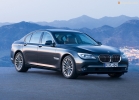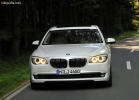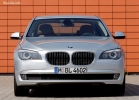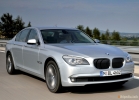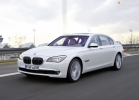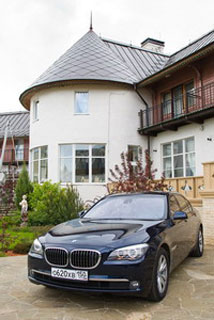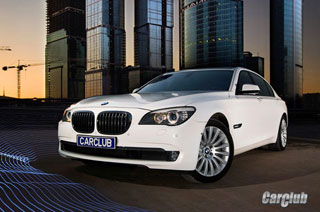Test drive BMW 7 series F01 02 since 2008 sedan
Test drive new BMW 750i
 New engines, a new back, a new control concept and something else. The new 750i receives a bunch of technical innovations, for example, control of the rear wheels. We will check in practice
New engines, a new back, a new control concept and something else. The new 750i receives a bunch of technical innovations, for example, control of the rear wheels. We will check in practice In the end, the client is always right. The fans went through the bones of the former seven. And first of all because of the design. Idrive managed to criticize strong criticism. Despite the swearing, the Munich car-manufacturer still remained faithful to the main model concept
750i is as strong as the previous 760i
 In the fall of 2008, 3 engines will be offered to the buyer to choose from. In addition to the completely new 730D with 245 hp, there will be a six -cylinder Twinturbo engine with a capacity of 326 hp. In the model 740i and Ottomotor V8 with a capacity of 407 hp In 750i. The eight-cylinder engine is impressive with its rotating moment of 600 Nm and 1750-4500 revolutions. With such power, a car weighing 1.9 tons is easy to move.
In the fall of 2008, 3 engines will be offered to the buyer to choose from. In addition to the completely new 730D with 245 hp, there will be a six -cylinder Twinturbo engine with a capacity of 326 hp. In the model 740i and Ottomotor V8 with a capacity of 407 hp In 750i. The eight-cylinder engine is impressive with its rotating moment of 600 Nm and 1750-4500 revolutions. With such power, a car weighing 1.9 tons is easy to move. No slower than V12, but more economical
The eight -cylinder engine allows the car to achieve worthy characteristics at 760i. From 0 to 100 km/h it accelerates in just 5.2 seconds, which is even 0.3 seconds faster than 760i. The engine uses a direct fuel injection technology called High Precision Injection. This should reduce the engine hum and fuel consumption will be released 11.4 liters, which is as many as 2 liters less than the previous one.
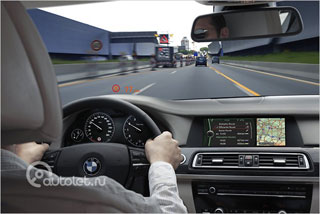 New rear axle control
New rear axle control Another update of the seven, which is offered additional control of the rear axle. Something similar is offered by Renault for its Laguna model. But BMW has its own system: the rear wheels, depending on the speed, rotate using an electric motor up to 3. Outside, this is practically not noticeable, but in sharp turns the difference is felt very well. Depending on the speed of movement, the angle of rotation decreases to 70 centimeters.
Technical innovations
 BMW promises that with the new control system now on the rear seats, movement from the strip to the strip will not be felt at all. We decided to try this phenomenon. But, alas, there is not enough positive here: if you sit behind the leg on the foot, then the person begins to transfer to the other side as soon as the car changes the strip during sports driving. At the same time, the new system will cost an additional 1.750 euros. In our opinion, the result is not worth the money.
BMW promises that with the new control system now on the rear seats, movement from the strip to the strip will not be felt at all. We decided to try this phenomenon. But, alas, there is not enough positive here: if you sit behind the leg on the foot, then the person begins to transfer to the other side as soon as the car changes the strip during sports driving. At the same time, the new system will cost an additional 1.750 euros. In our opinion, the result is not worth the money. Additionally, in the new seven, you can see the updated Black Panel display, the function of identifying people (supplement to the night vision system) and an elevation of speed restriction.
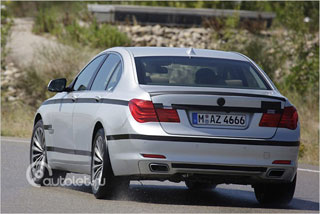 Interrogative prices
Interrogative prices The new 750i will cost in Europe from 90,000 euros, which is about 10 percent more than the previous cost. For this money, the buyer receives a more powerful and sophisticated aditmate. In general, this is a good sentence, because similar in the class, level and functionality of the model, such as the VW Phaeton W12 or Mercedes S 500 are much more expensive.
Grade
The new seed took a noticeable, big step towards progress. This applies to a great new design, but even more concerns an important topic of saving fuel consumption. BMW also charged its pet in serial delivery with a large number of technical innovations, which cannot but rejoice.
Engine:
+ 750i is noticeably more economical than the previous 760i
+ much lower fuel consumption than competitors
Control:
+ serial shock absorber control system
+ It is possible individual adjustment of depreciation comfort
Corps and salon:
+ beautiful predecessor and not boring design
- The collision warning system is not available
Price:
+ 750i is cheaper than their competitors
Specifications
Engine and drive
OTTO-V-MOTOR with Twin-Turbo charging and direct injection
8 cylinders, 4 valves per cylinder
Litrazh: 4.395
Maximum power: 300 kV (407 hp) at 5500-6400 rpm
Maximum rotating moment: 600 nm at 1750-4500 rpm
Rear drive
Six -speed automatic transmission
Dimensions and weight
Length: 5.072 m
Width: 1.902 m
Height: 1.479 m
Distance between wheels: 3.070 mm
Empty weight: 1.945 kg
Loading: 630 kg
Trunk volume: 500 l
Fuel tank volume: 82 l
Data measured in the test
Maximum speed: 250 km/h
Acceleration from 0 to 100 km/h: 5.2 s
Average fuel consumption: 11.4 liters
Fuel consumption in the city: 16.4 liters
Fuel consumption outside the city: 8.5 liters
CO2 release into the atmosphere: 266 g/km
Fuel type: Super
Class of harmful substances: euro 5
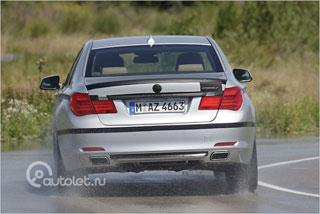
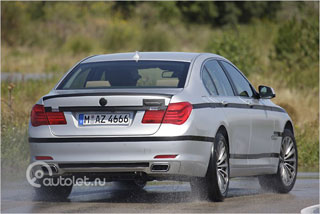
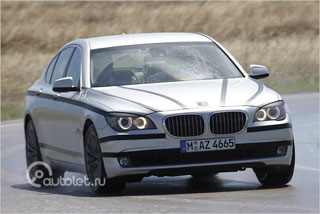
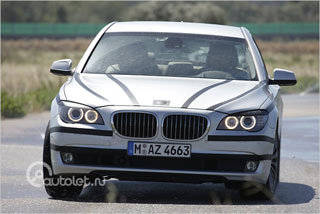
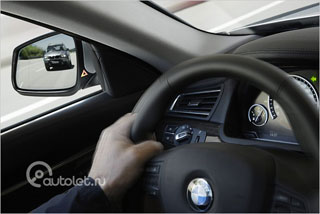
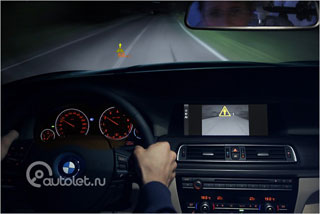
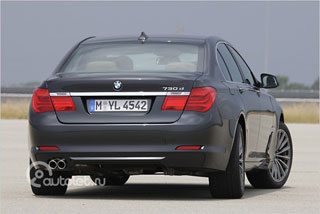
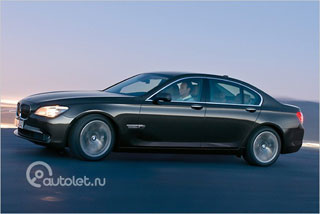
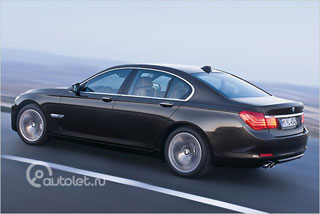
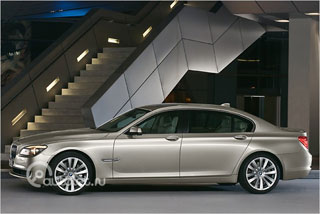
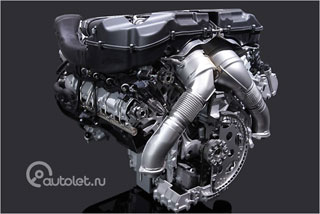
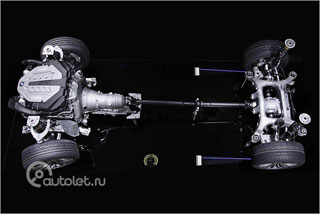

A source: Autolet.ru

